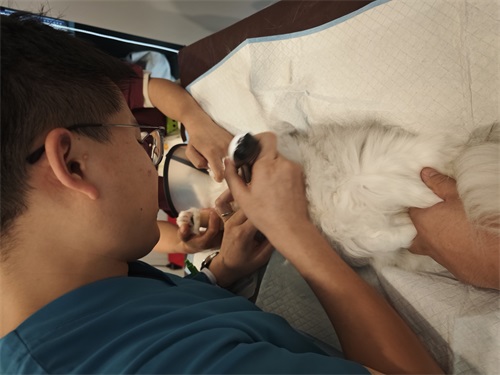You know, when most of us hear “ultrasound machine,” we instantly think of expectant parents listening to a tiny heartbeat or seeing their baby’s face on screen. That’s absolutely a big part of what it does—but it’s actually way more than that. Think of it like this: it’s a kind of sonic flashlight that lets doctors—and even vets—peek inside without making a single cut.

At its core, an ultrasound machine uses high-frequency sound waves—way above what our ears can catch—to bounce off internal structures. A handheld probe, called a transducer, emits these sound waves, and when they reflect back, the machine calculates distances and maps them out as images in real time.
If you’ve ever had an ultrasound scan at a hospital, you know there’s this cold gel on your skin before the probe moves around. That gel is there for a reason—it helps transmit the sound waves efficiently without interference from air pockets. The probe sends out pulses; those pulses hit tissues and bounce back, letting the machine build up an image tailored to whatever you’re looking at—muscles, organs, blood flow, fluid... you name it.
So what can it actually show?
Monitoring pregnancy: checking fetal size, heartbeat, position, how many little ones there are—really common stuff. As one friend once joked, “It’s like the baby’s first selfie.”
Looking at organs: liver, gallbladder, spleen, thyroid, kidneys—you get a clear picture without radiation or invasiveness.
Seeing blood flow: Doppler versions let you observe circulation in vessels or a beating heart in real time.
Guiding procedures: they’re often used to help doctors perform precise tasks like biopsies—imagine using the screen to see exactly where the needle goes.
Quickly diagnosing emergencies: some ERs now treat ultrasound as essential—far more reliable than a stethoscope for spotting internal bleeding or cardiac issues in trauma situations.
And, not to be overlooked, there are therapeutic uses too. Think breaking up kidney stones or tumor ablation—high-intensity focused ultrasound (HIFU) can literally destroy tissues or help deliver drugs directly into targeted areas.
Why people (especially abroad) are so into it
You’ll find foreign healthcare pros often touting ultrasound for its portability, safety, and immediacy. It doesn’t expose patients to radiation, it’s relatively cheap (especially compared to CT scans or MRIs), and it’s easily taken bedside or even into rural clinics.
On top of that, professionals love that it brings transparency—patients get to see the “inside story” live. Actually, there’s a growing trend, especially among tech enthusiasts and journalists, to push ultrasound toward mainstream and even consumer use—some say it might replace stethoscopes someday.

A neat example beyond human medicine: BXL‑V50 ultrasound
Now, here’s something neat you might not expect: ultrasound isn’t just for people—it’s also a staple on farms and vet clinics. Take the BXL‑V50, a handheld, rugged, portable ultrasound made for livestock. Think cows, sheep, pigs, even horses.
This device is lightweight (around 1.2 kg), comes with an 8‑inch HD screen, and is built tough—waterproof and dustproof, really farm-ready. It runs for 7 hours on a single charge, has buttons usable by left- or right-handed people, and even features sun visors to ward off glare when you’re outside.
Farmers use it to detect early pregnancy, do fetal counts, check for uterine or ovarian inflammation, and measure things like backfat thickness or muscle area—critical metrics when they’re making decisions about feeding or planning the meat yield. Really, it’s like giving a farmer the ability to get an ultrasound-grade snapshot of their animal’s health and development on the go.
Risks and limitations—just keeping it real
Most remote ultrasounds are safe and pain-free—no radiation, non-invasive. But they do depend heavily on the operator’s skill (image quality can drop with larger or denser patients), and they don’t work well through bone or air (like lungs or gas-filled intestines).
Even though they’re considered low-risk, prolonged or non-medical use—like those “keepsake” womb videos—can raise eyebrows. Organizations like the FDA recommend keeping ultrasound use medically justified—and delivered by trained hands.
Wrap-up, in a nutshell
So, what does an ultrasound machine do? It lets us “interview” the body—or animals—using sound. It helps us see without cutting, judge without exposing, and decide clearly—whether it’s in hospital wards, vet farms, emergency rooms, or outpatient clinics.
It’s a bit like having a magic wand: you point, and you uncover what’s happening inside. And sure, it's getting better all the time: 3D, 4D, handheld, AI-assisted… who knows where it’ll go next.









